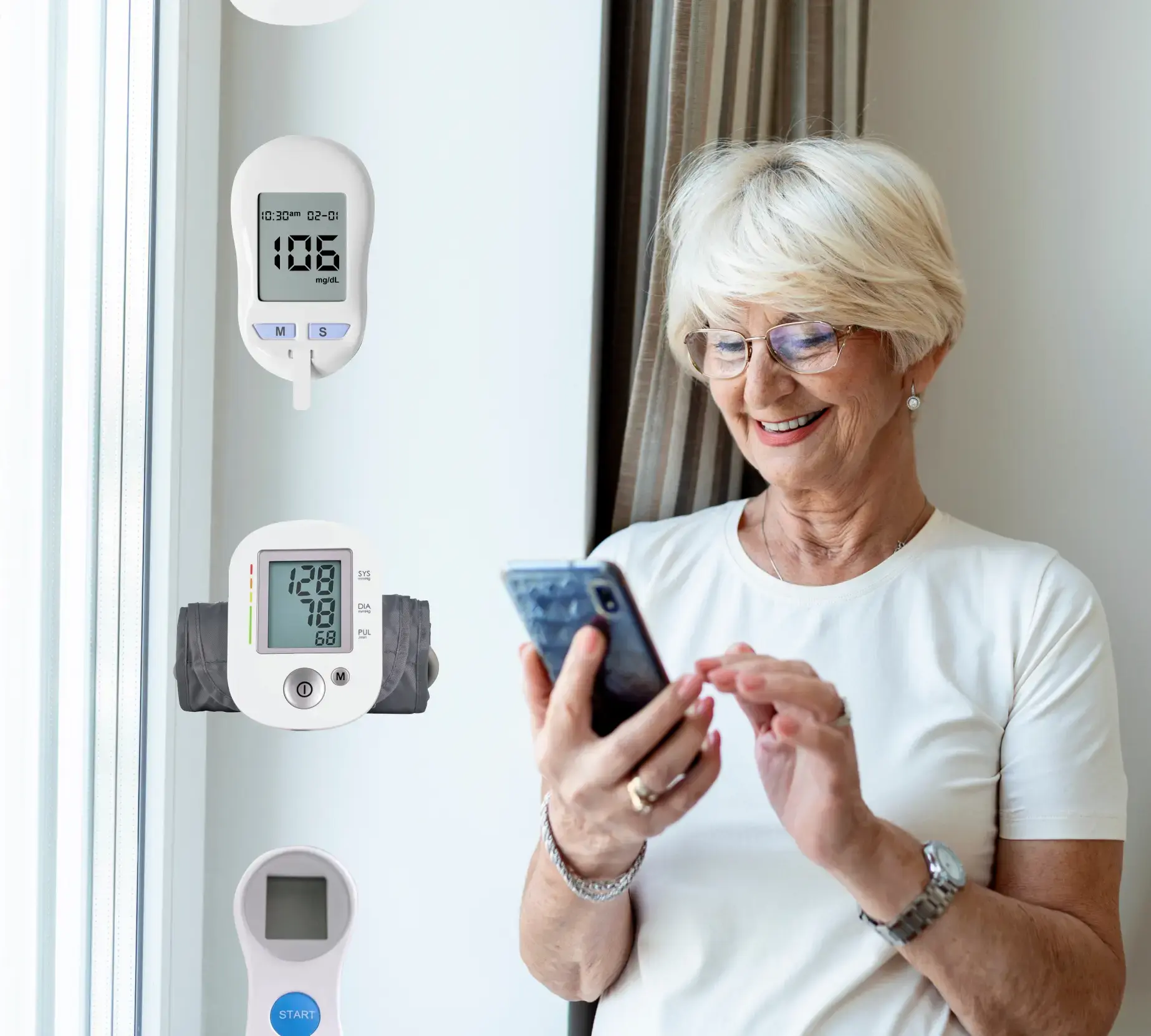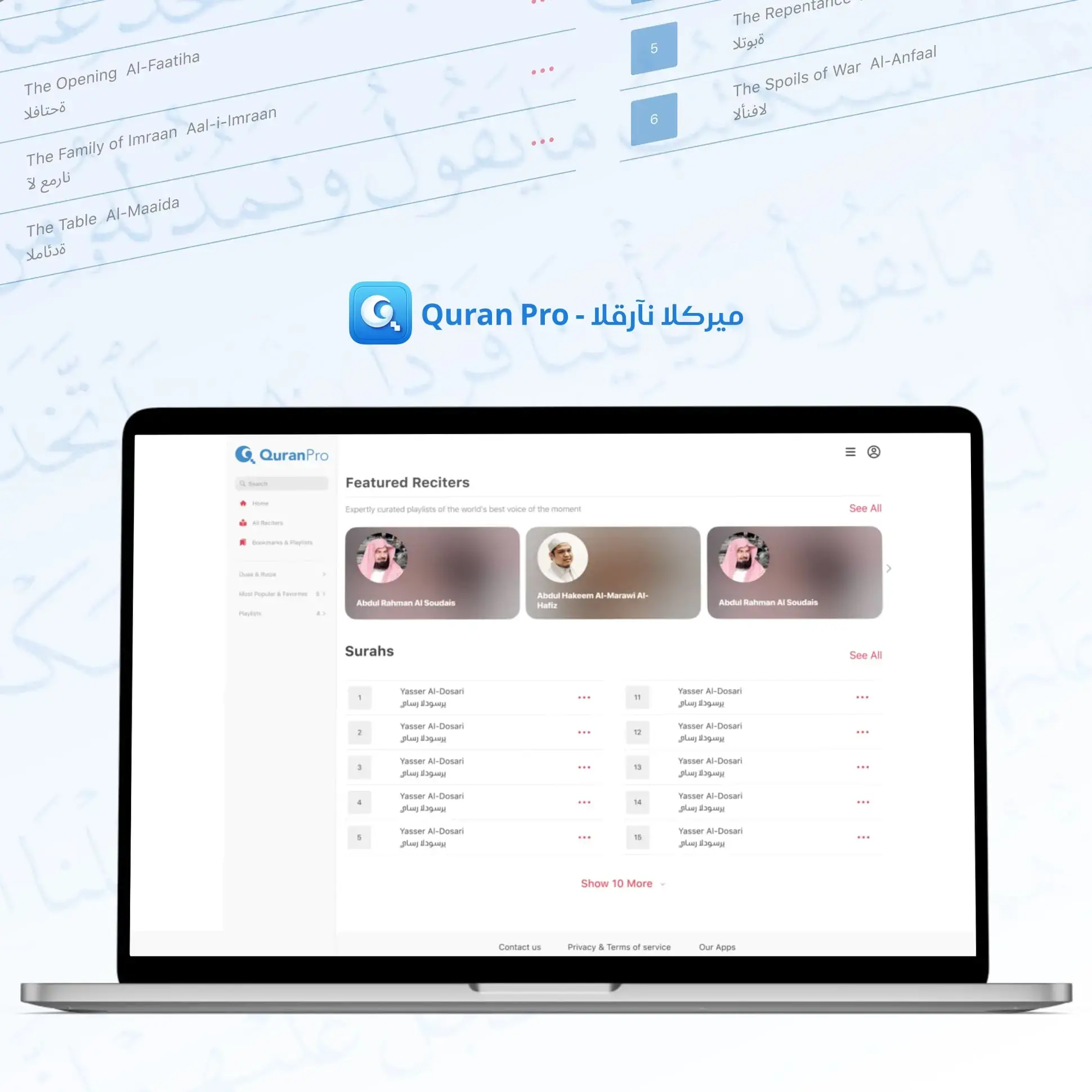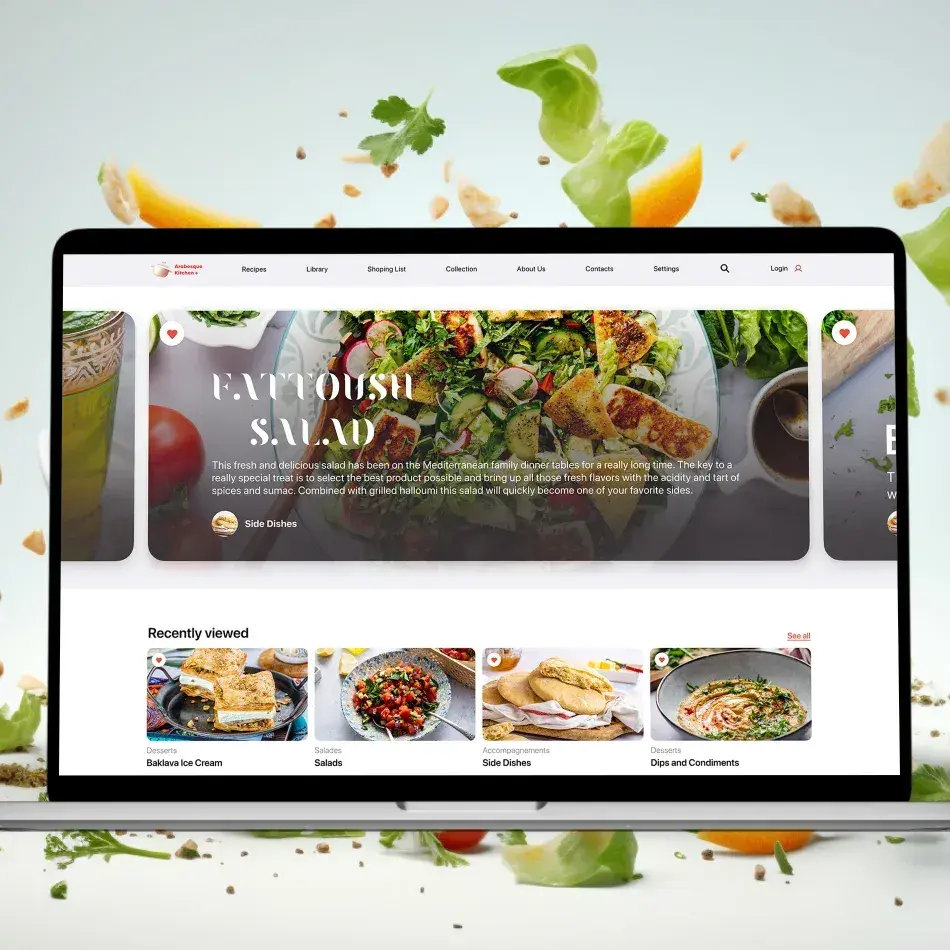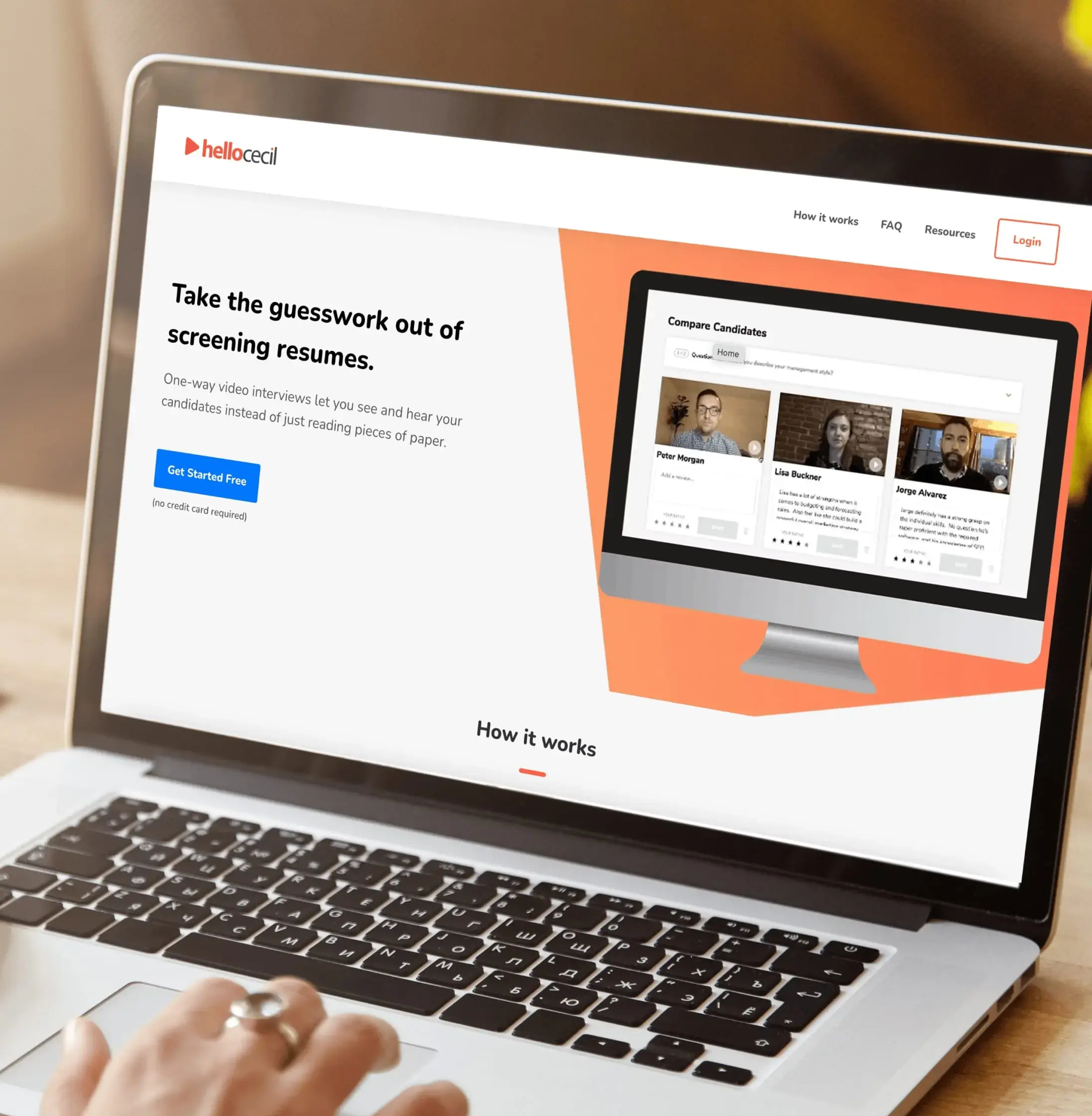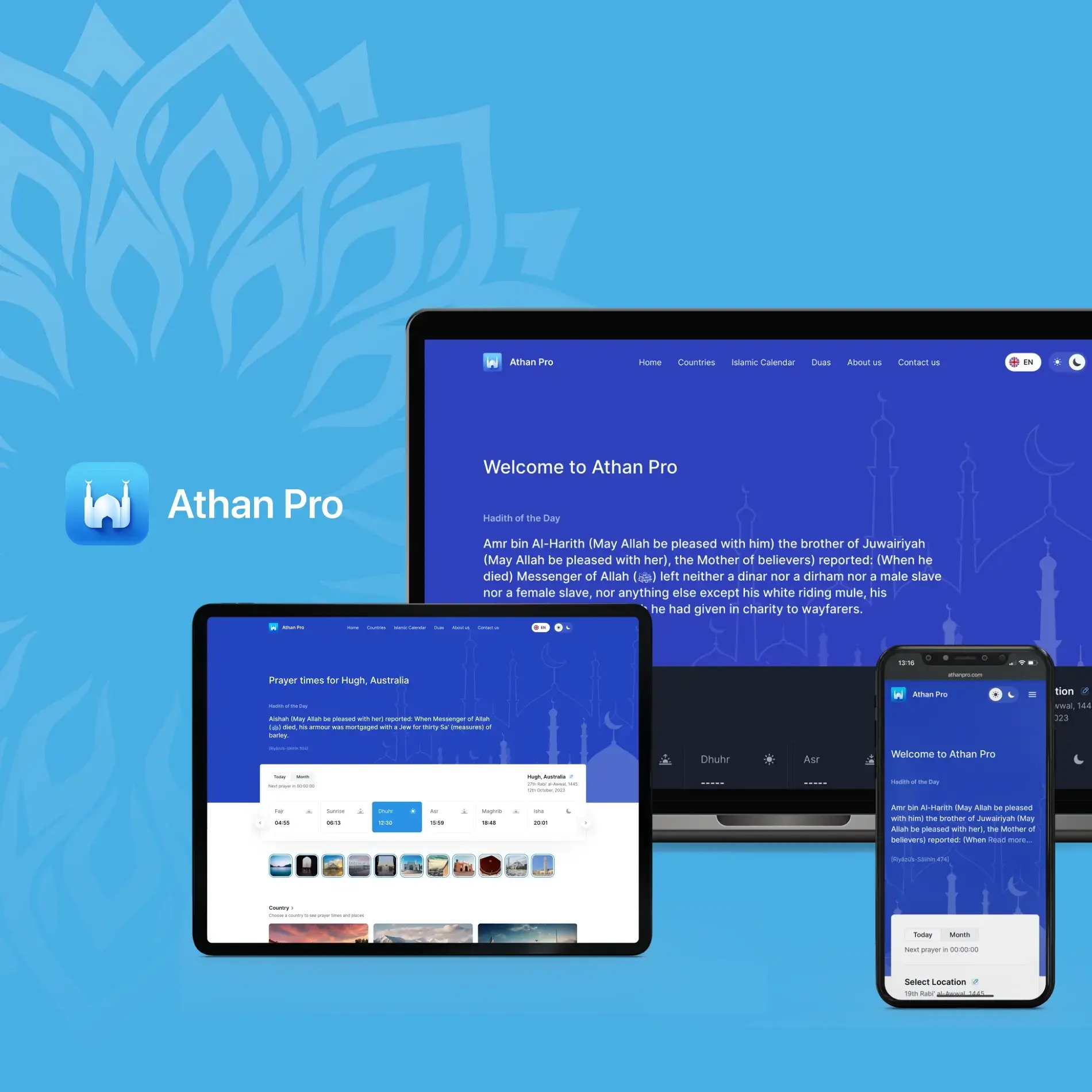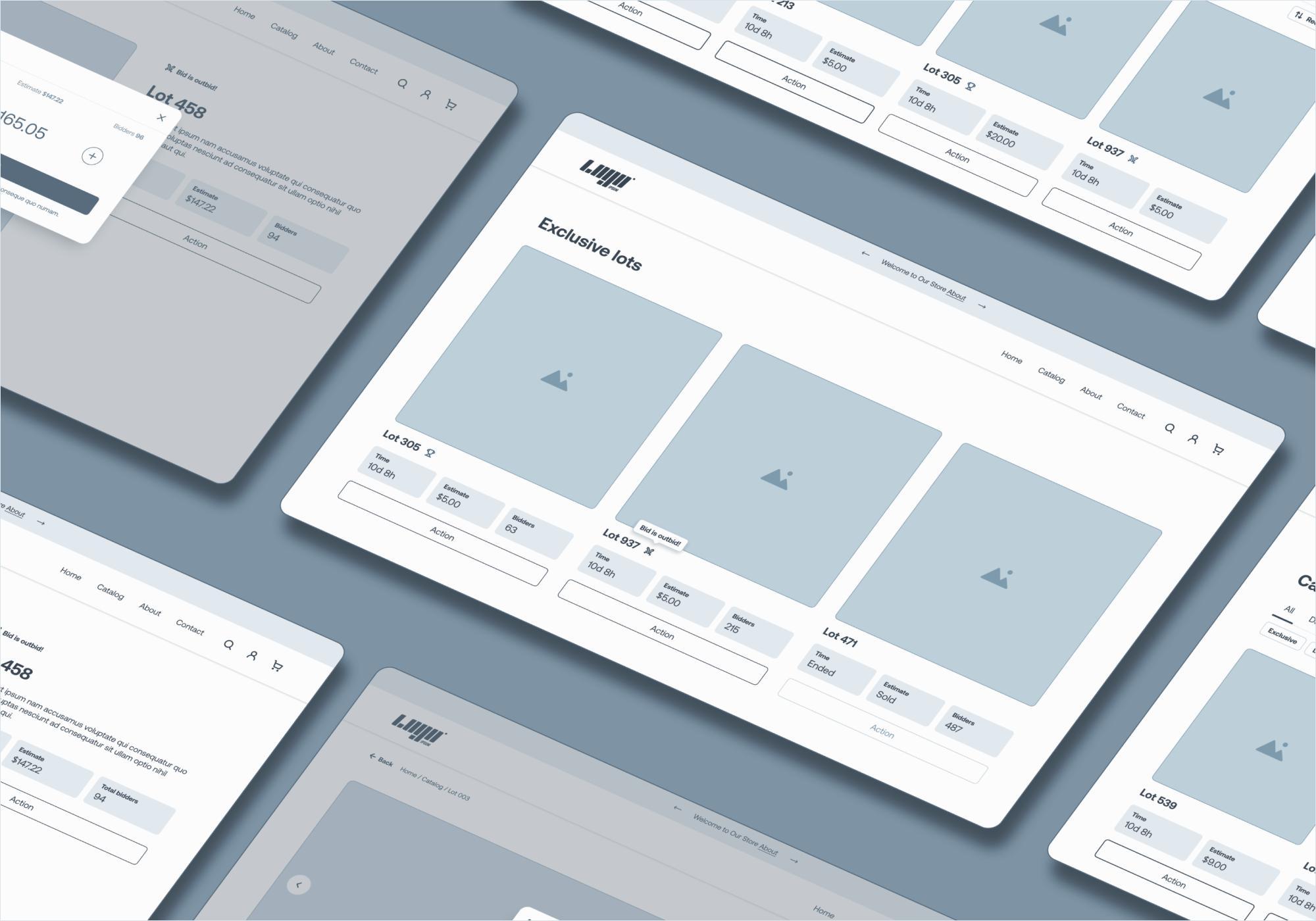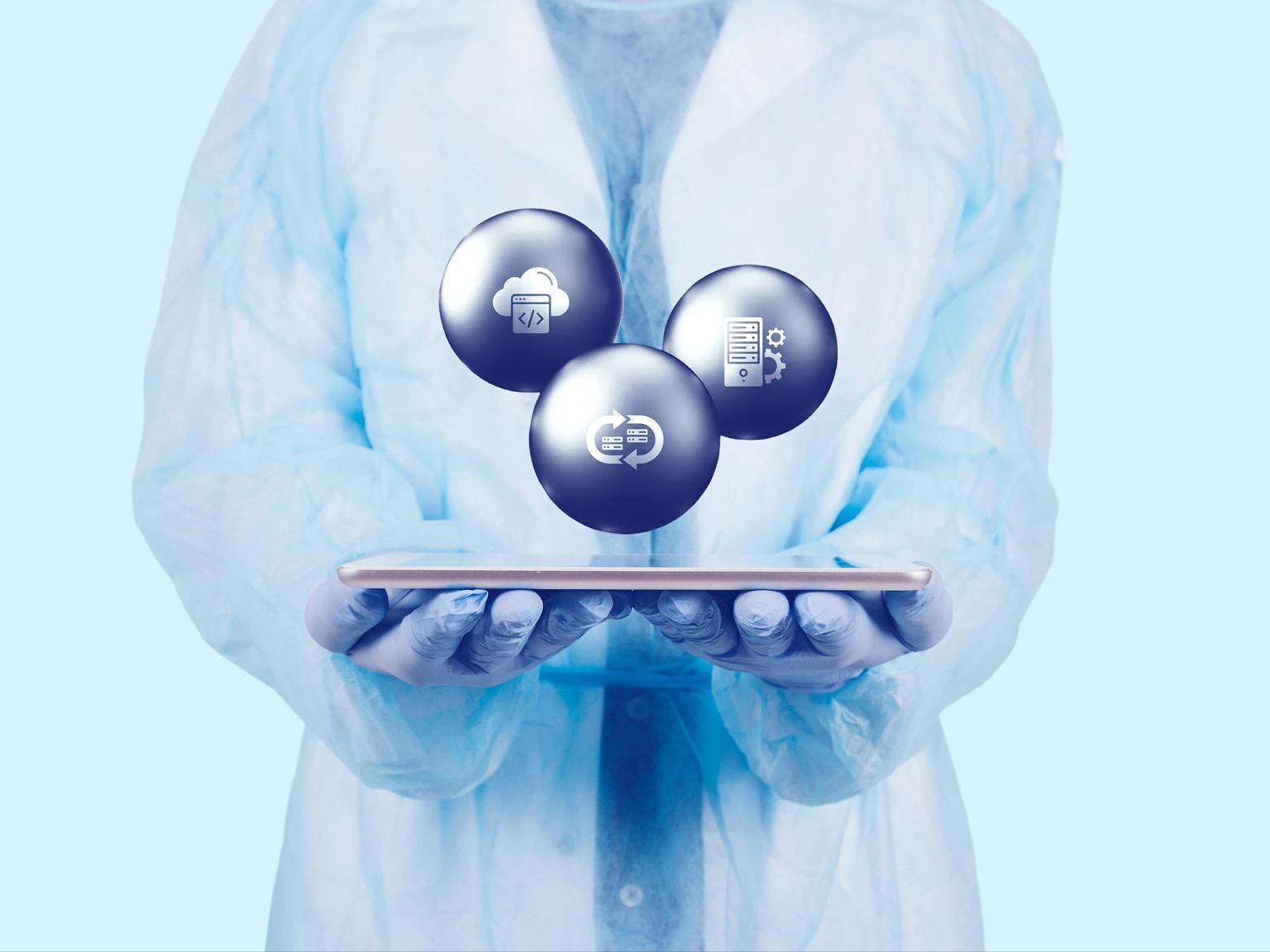The healthcare industry depends on a suite of highly specific solutions to keep the patient experience smooth. This is why making quality software is vital, and medication management app development is no exception. Apps that may seem fairly straightforward can save lives and greatly reduce doctors’ workload.
The healthcare market is thus in a state of constant demand, and you can be the one to deliver the medication management app it needs. With today’s handy guide from JetBase, you will learn:
- The state of the medication app market;
- Types of medication apps;
- Essential features for this niche;
- The best way to approach development;
- The approximate cost of medication management app development.
As a result, you’ll be entirely qualified to enter the market with your own solution. So, let’s start exploring.
What is a Medication Management App?
A medication management app, also known as a mHealth app, helps patients:
- Track pill intake
- Remind them when to take medication
- Early warnings for prescription refills
- Assistance with calculating dosage changes
- Storage of prescription information
The robustness of the feature set is determined by the developer.
Typically, medication management app development will only be done for mobile platforms. This is because such apps are most useful when they can deliver reminders to the patient instantly. On a similar note, integrating the app with wearable devices helps with that purpose, such as sending notifications to patients’ smartwatches.
These apps also have to work with other healthcare systems. That allows doctors:
- Edit prescription information
- Monitor a patient’s intake
- Send refill orders
Thanks to that, patients don’t have to make extra visits just to request meds. Meanwhile, doctors have a centralized place to track their patients’ status.
As a result, something as simple as a medication management app helps cut costs and improves patients’ experience. It’s not hard to see why such a solution would be attractive. In fact, we’ll next look at the market for such apps and show why it may be lucrative to partner with a medication management app development company.
Medication Management App Market Analysis
Research suggests that specialized systems for medication management can be highly effective. They specifically help patients with chronic conditions and, working in tandem with Electronic Health Records (EHRs), simplify medication tracking. In fact, some research suggests that self-management with such apps can be the way forward.
Regardless of which approach your medication management app takes, it’s very likely to be a financial success for you. Why? Well, the market for such solutions is booming, with 11.1% yearly growth until 2029. That will push the market’s size from the current $3.12 billion to $5.29 billion. This leaves plenty of space for a new medication management app development company to join in on the work.
Interestingly, data shows that just a small handful of products cover over 90% of downloads of mHealth apps. This means the market is currently ruled by just a few successful applications. What could be the cause? Well, the same report outlines a few shortcomings that the average medication management app has. These are:
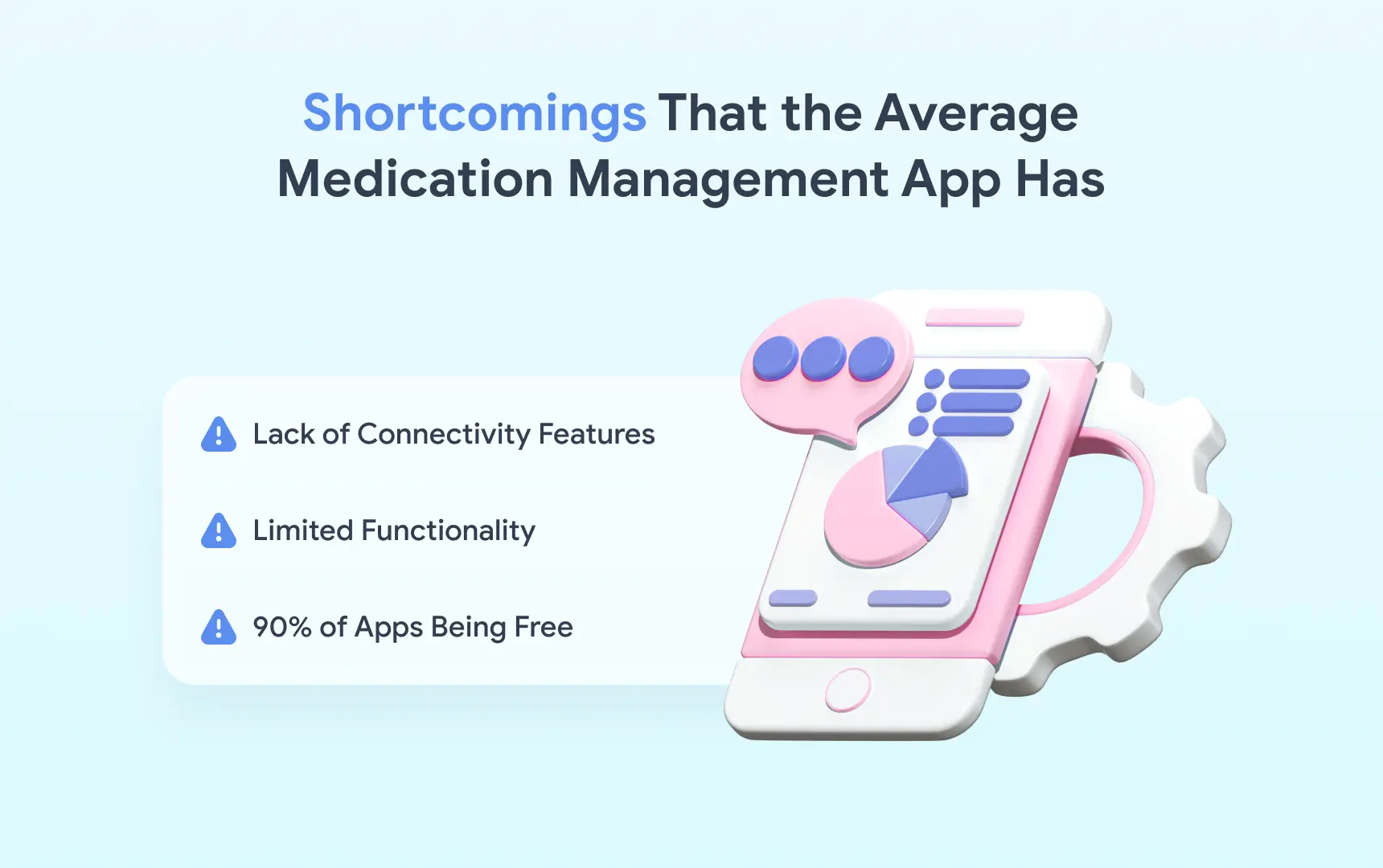
Now, the first two points speak for themselves. An app that doesn’t offer competitive features won’t measure up well in the market. But what makes the third point a problem? Well, it indicates that most of these solutions aren’t trying to monetize and recoup their costs, which could suggest a generally low investment in them.
That leads one to conclude that these apps don’t boast extremely modern or unique features, which would understandably raise the cost of making them. Thus, the market is flooded with same medication management app options. This not only leaves patients with little choice but also gives the apps a bad reputation.
All of that leads us to one thought: it’s high time to fix that situation with a high-quality solution that shakes things up. This involves:
- Fresh features
- Proper connectivity
- An understanding of what a medication management app needs to provide
For that very purpose, let’s discuss what kind of app you can make and how.
Types and Examples of Medication Management Apps
Like we said before, there’s room to experiment when it comes to medication management app development, making a unique solution. You can work within the framework of a few different types, making it easier to find your niche. In this section, we’ll talk about the variety that mHealth apps offer and help you make your pick.
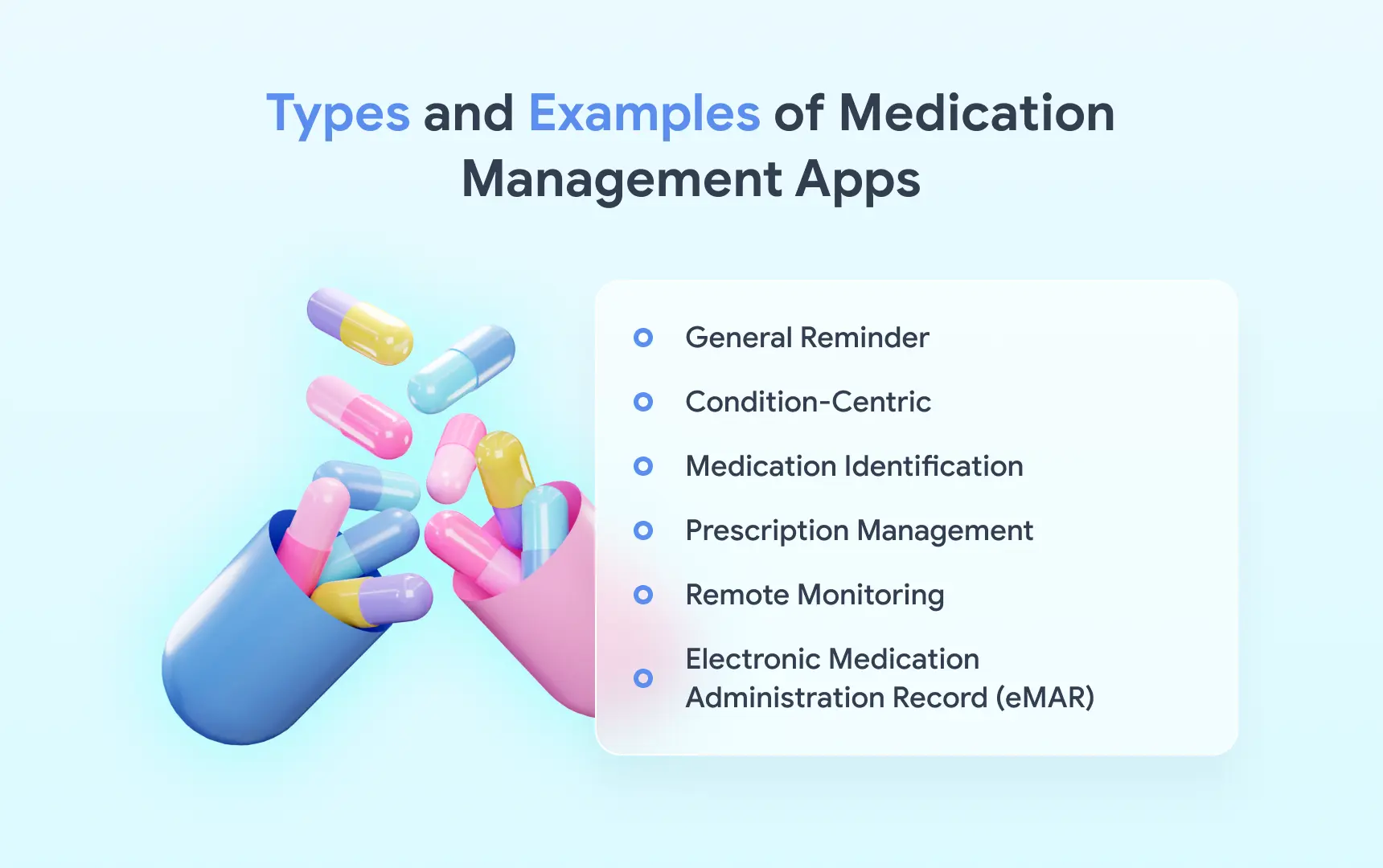
General Reminder
This type of medication management app is the simplest one. It serves as an “alarm clock” to let people know when to take their meds. It can still have flexible settings, with multi-drug support and dosage selection. As a result, this is the default type of app, and it’s most familiar to users despite its somewhat limited usability. Apps like Medisafe, with 10M+ users, prove that there’s demand for these straightforward solutions.
Condition-Centric
Certain illnesses, such as asthma, chronic pain, and diabetes, have their own specific tracking requirements. A custom medication management app for these will include special metrics like sugar levels, breathing patterns, and comprehensive vitals reports. That makes wearable integration essential for this type of app.
While this type understandably has a somewhat smaller market share, it’s still possible to make a successful product here. Certain conditions get a lot of research focus and you can even partner up with state grants to supplement development.
Medication Identification
mHealth apps also include this handy type that is used to scan and name pills. These solutions have vast knowledge bases that identify any drug in them. They also provide information on the drug’s recommended dosage and side effects. As a result, this type of medication management app is quite popular among patients who need to take a variety of drugs.
It helps patients keep track of what pills they have available and reminds them of their effects. Plus, these apps can point out potential conflicts between medication ingredients, which can be hard to keep track of. This prevents potential health issues and gives patients some control over their drug intake.
Prescription Management
For patients who need to regularly take medicine over long periods or even perpetually, getting refills can be a big bother. Scheduling a doctor’s visit just to get a new prescription is both time-consuming and costly. Thankfully, this type of medication management app fixes that issue.
Digital prescriptions can be refilled remotely and within seconds, taking up less time from a doctor’s busy day. They also don’t require extra visits, freeing up both the patient and the doctor. Extensive security measures will help prevent fraud, while integrations with medical databases ensure timely refills.
Remote Monitoring
Part of medication intake is ensuring the patient sticks to the correct dosage, follows the schedule, and doesn’t end the course prematurely. This is why monitoring apps are an essential part of the ecosystem. They help doctors keep in touch with the patients and provide quick advice on their medication intake. For a successful example of such an app, look at MyTherapy, with over 100 million users.
This medication management app type can be mixed with regular telehealth solutions, allowing for both meds control and direct consultations. However, ensuring this solution type is fully compatible with hospital systems is important. Otherwise, doctors won’t be able to fully monitor the patient and prescribe changes as they see fit.
Electronic Medication Administration Record (eMAR)
Unlike other types, these solutions are intended specifically for medical institutions. eMAR tracking is important for managing the hospital’s medication inventory and preventing any errors in the prescription and administration of drugs. It’s also intended to streamline the prescription process while ensuring that it’s all done according to protocol.
Before we move on to talking about these apps’ core features, we should point out that this list isn’t intended to create hard divides between the types. It’s quite possible to mix functionalities and thus have general-purpose apps serving niches. A reminder app can also include a pill identification scanner, for example.
The final state of your product is up to you, so steer your medication management app development according to your needs and preferences.
Main Features of Medication Management Apps
Regardless of what ideas you will have and which type you choose, some functionality is a must-have. This section will briefly cover the most important features for your mHealth application. Think of these as the foundation on top of which you will build the rest of the functions.
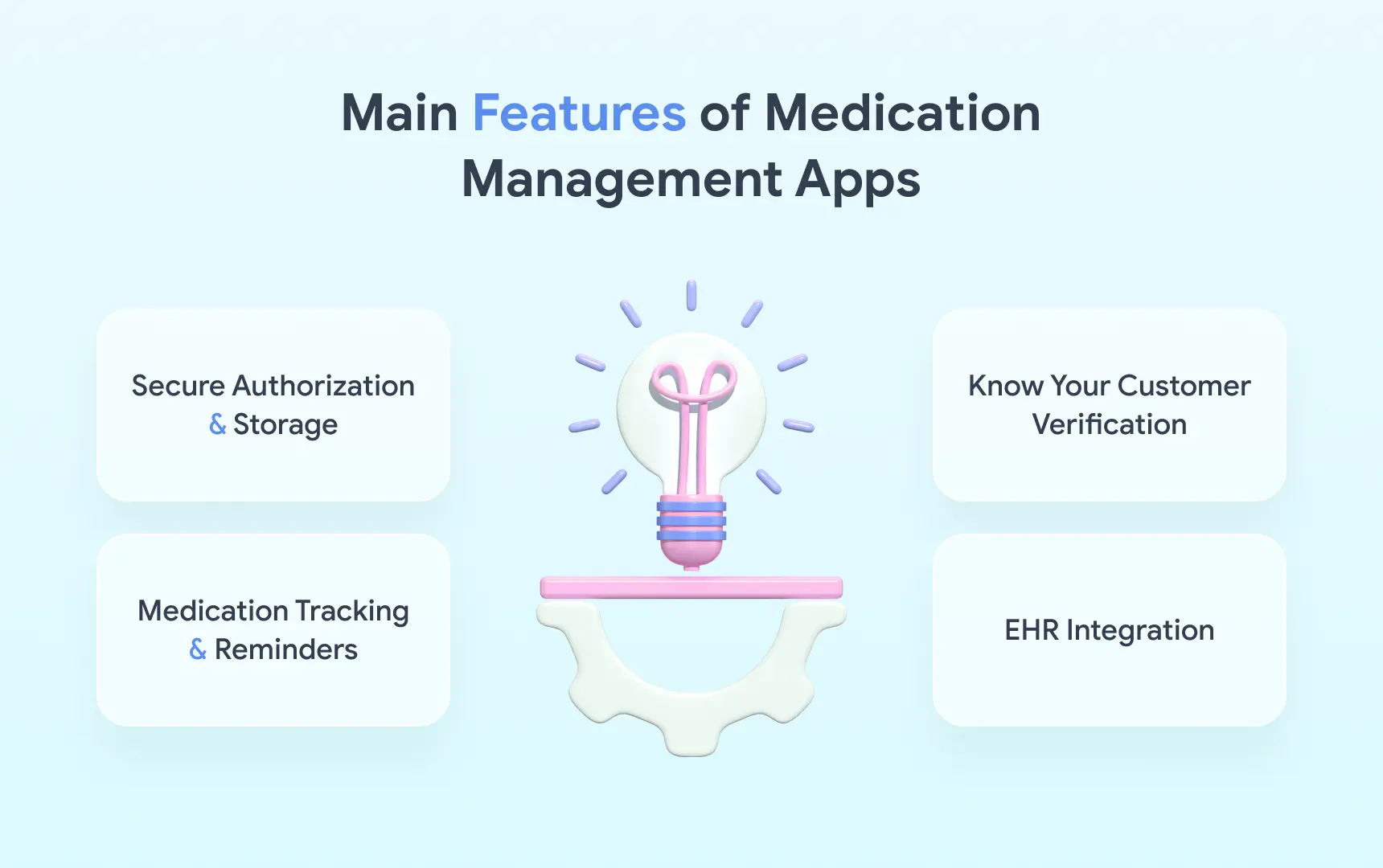
Secure Authorization and Storage
Working with medical data means you need to comply with certain regulations and implement specific security measures. Things like encryption at rest and in transit, two-factor authentication, and role-based access are a must. The latter helps ensure that patients never see the control panels that doctors do, preventing errors and fraud.
Know Your Customer Verification
Prescribing medication online would run the risk of people fraudulently getting someone else’s drugs. Thankfully, a diligent KYC process with document scanning and photo verification helps weed out such cases. It guarantees that your users have confirmed identities, and your security measures keep verification data safe.
Medication Tracking and Reminders
The whole point of medication management app development is to ensure patients take their meds on time. So, it’s no surprise that a flexible tracking system with reminder options is the foundation of any such app. This should include things like:
- automatic reports of drug intake over time;
- doctor access to schedules for confirmation;
- ability to set recurring reminders with specific sounds and patterns.
EHR Integration

Connecting a patient’s app account to their real-life medical records helps instantly sync their medication history. It also allows doctors to track the patient’s recovery and diligence in drug intake. Plus, integration with a hospital’s records and system makes it easier to prevent fraud with limits set hospital-side and controlled by professionals.
Compliance and Data Privacy Requirements
Dealing with healthcare data always requires following the law. The app must be able to meet certain requirements such as:
- HIPAA is the law in the U.S.
- GDPR applies only to EU users
- The HITECH Act is concerned with medical software
It is important for developers to secure user login, track every activity in detailed audit logs and use encryption for data storage. Not meeting these requirements may result in either fines or the shutdown of the app. This is why we always have security specialists and legal consultants involved during every part of building a medication management app.
We use best practices from the start to guarantee your app follows regional laws. This includes:
- All information is protected by end-to-end encryption (AES-256)
- Safeguard API gateways
- RBAC stands for role-based access controls
- Keeping all audit logs and trails
Medication Management App Development: Step-by-Step Guide
Now that we’ve covered core features and app types, it’s time for the main event. Here’s how you can approach the development of your medication app in stages.
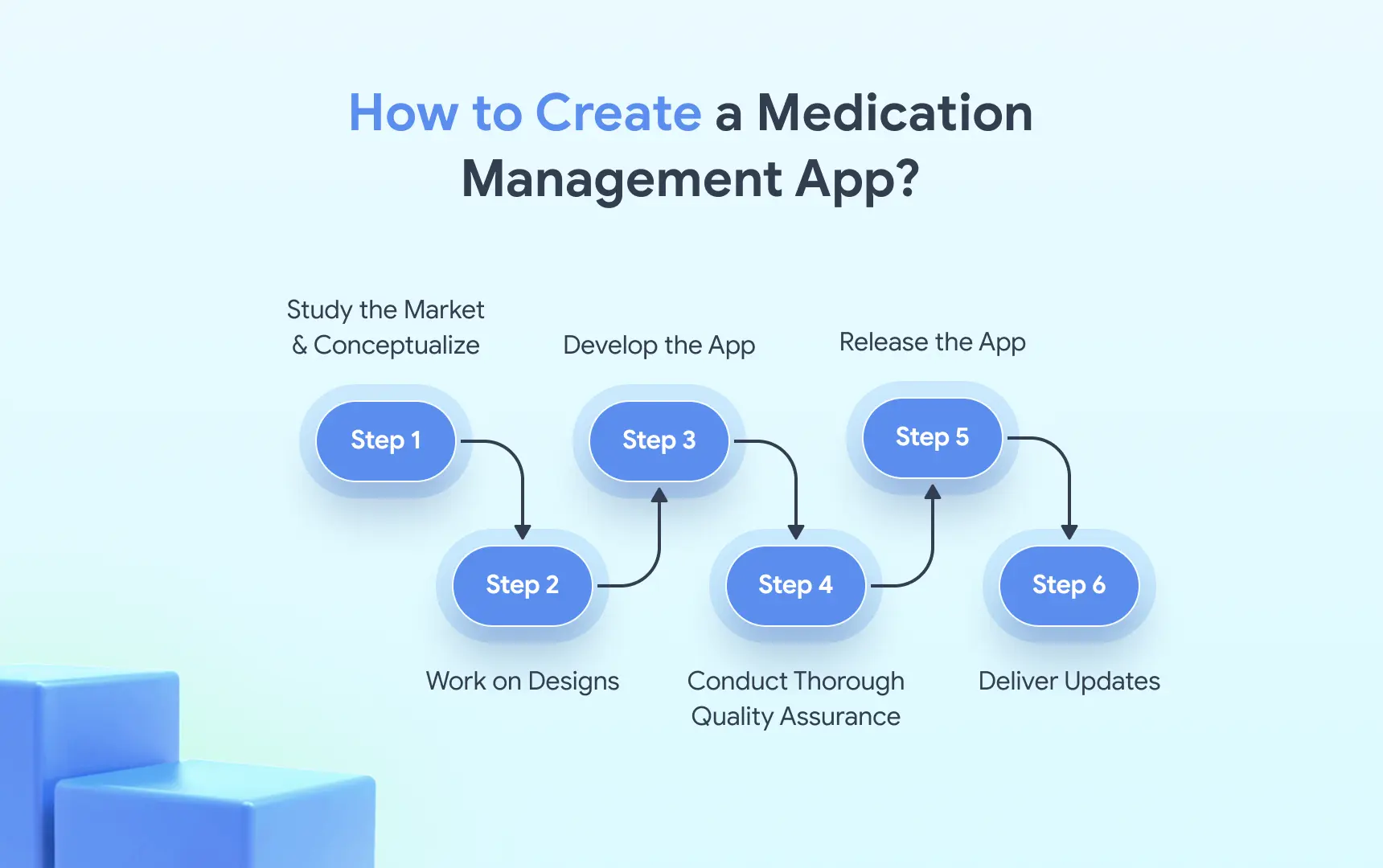
Step 1. Study the Market and Conceptualize
Understanding what users want and what competitors currently lack is the essential first step. It allows you to set a clear path forward and determine which features are worth investing in. Creating a specific concept to follow will help inspire your team, set deadlines, and draw up a cost assessment.
Step 2. Work on Designs
Outline your app’s look and feel, with unique branding and streamlined navigation. Considering that a medication management app needs to appeal to all kinds of users, UX work should take up quite a bit of time. It’s important to iterate and gather feedback to get the app’s design just right. In a competitive market, this can be what makes the biggest difference.
Step 3. Develop the App
Hand off your ideas and direction to the development team that will tackle the creation process. This includes delivering an MVP, creating versions for all applicable platforms, and polishing the code. It’s a lengthy process, the longest of the steps, but a competent team will make it a breeze for you. If you want to see that kind of quality - just shoot us a message.
Step 4. Conduct Thorough Quality Assurance
No matter how amazing your team is, a second look is always necessary. It allows your QA staff to catch bugs or suggest last-minute quality-of-life changes. As a result, you’ll end up with a much better medication management app. Once that’s done and you’re getting good user feedback, consider the product ready for the public.
Step 5. Release the App
Push your product to app stores, marketing it and, ideally, arranging agreements with medical institutions. Offering your service to them helps establish a user base, as well as get some more renown for the product. It’s also important to take the first few weeks as a learning opportunity, gathering as much data on the product’s usage as possible.
This is important because you still have time to adjust your marketing strategy or capitalize on initial successes. Analyzing the market’s reaction to your app’s first version will help you in the future, too, as you take the last step.
Step 6. Deliver Updates
Releasing your medication management app isn’t the end of the work. Pushing updates with new features is an essential part of development. You’ll also need to conduct maintenance from time to time, especially to keep security tight. This also keeps the users interested and helps you remain competitive for years to come.
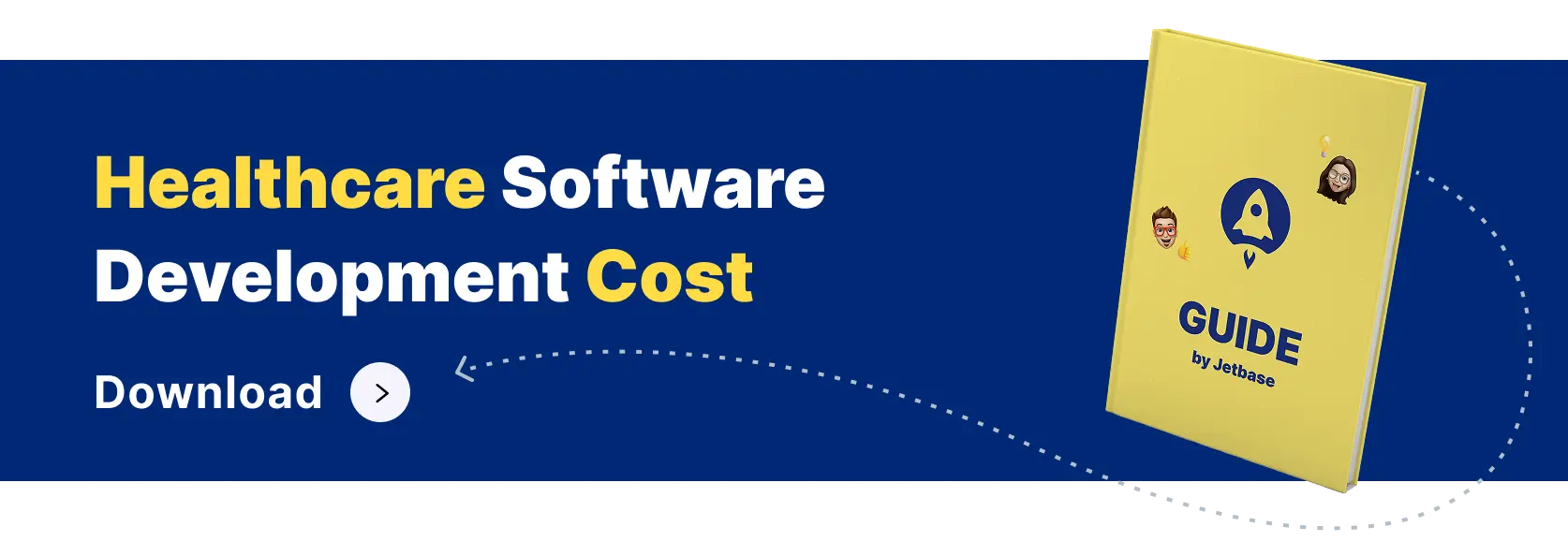
Medication Management App Development Cost and Timelines
As with any type of development, making a medication management app requires certain investments. The price range here can be quite diverse, so we’ll cover the general cost of mHealth app development here to give you an idea of the market. It is all based on JetBase’s own experience and projects.
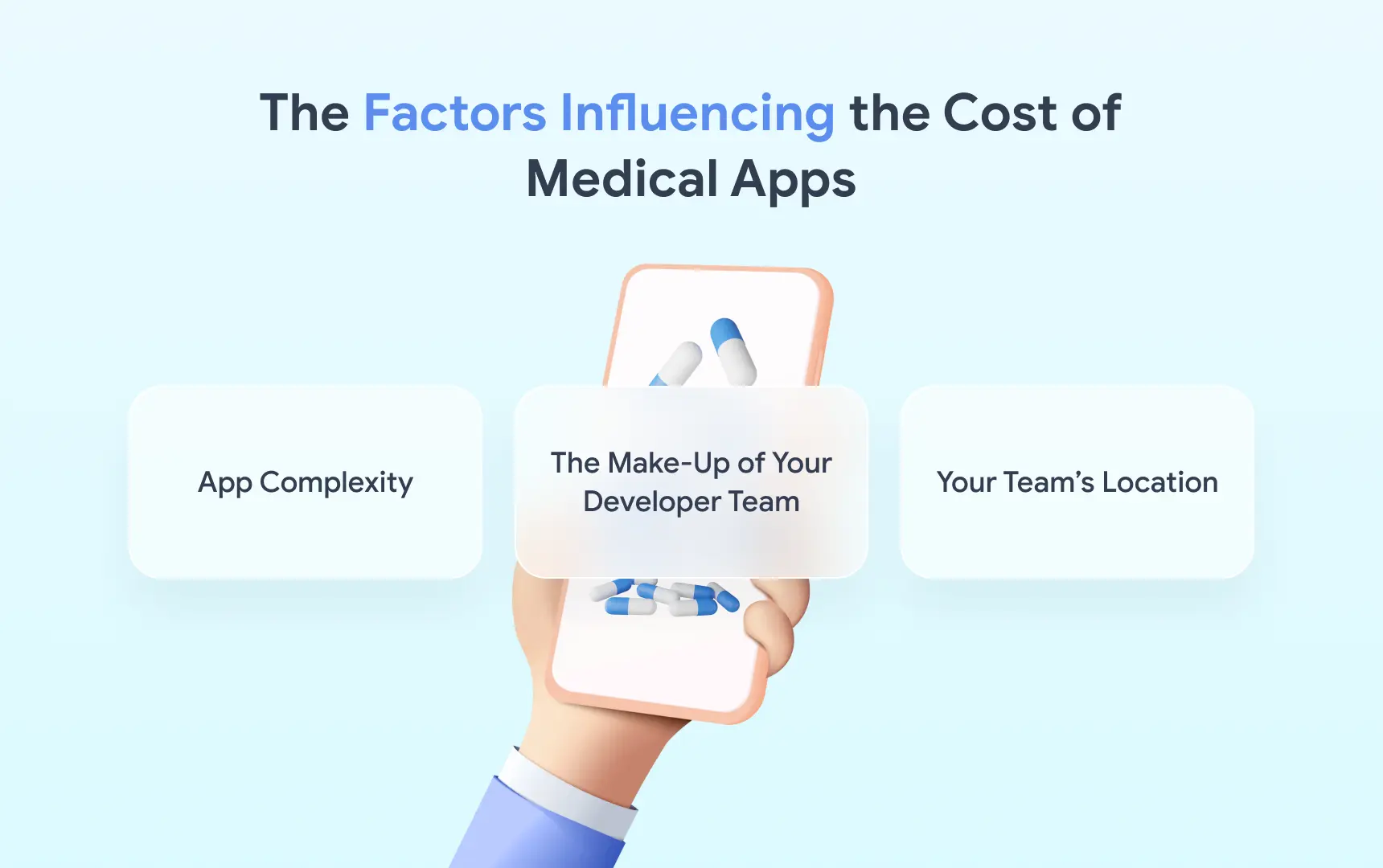
The factors influencing the cost of medical apps are all familiar to those who’ve run projects before. First and foremost is app complexity, as a simple app with no frills will have a drastically different cost to a powerful medical system. Finding the right balance between feature density and ROI from each new feature is the real trick.
In general, we would say that an app needs at least one or two standout features, which substantially boosts its usability but doesn’t make the cost skyrocket. Numbers-wise, while a basic app will cost in the range of $30000 to $70000, a more refined product will go up to $90000 and a bit more. But that difference will be more than justified.
Another major factor is the make-up of your team. How many developers are working on the project, whether you’re using the services of a security expert, etc. It’s not an area you want to go cheap on, of course. But if you want to save money while still getting a good, skillful team, there is a way.
That brings us to the third factor - your team’s location. This can really change the final cost of a project, as teams from North America will have a higher hourly rate. Our current estimates put the range at about $120–160 for North America, while Western Europe is around $80–125.
Asia and Africa are the cheapest, between $20 and $60. But that kind of discount comes with some major risks and quality caveats. Instead, it’s wiser to look in the middle. For example, Central and Eastern Europe compete with rates between $50 and $85. What makes them the most attractive is the high number of qualified developers in that area.
Another crucial cost-forming aspect in creating a medication management app is regulatory compliance. Legal consultations are pricey, and catering to different regions will force you to consider different regulations. This is why having an on-site regulations specialist who can survey the entire development process might make sense.
Lastly, we’d like to showcase what specific parts of the development process can cost, to give you a better idea of what you’ll be investing into. Here’s how JetBase does it.
| Process | Cost |
|---|---|
| Market research | $1000 |
| UI/UX design | $6000 |
| Native mobile app development | $30000 |
| Security features | $3000 |
| Quality assurance | $7000 |
| Third-party integrations | $4000 |
What Else Is Needed for Medication Management App Development?
You’ve learned about the actual steps of developing mHealth solutions, as well as must-have features and the associated costs. Let’s cover the last points, discussing what helps make the development smoother.
First and foremost, of course, your team is the biggest asset. This includes everyone from your market analyst to the developers down to the marketing people. It’s crucial to have experts on every task and set up clear, efficient communication. That’s why many people find it easiest to work with established teams, outsourcing the job entirely.
Next, we’ve touched upon this above, but user-centric tests are absolutely essential. The tiniest things, like reminder sounds, can impact how people perceive your medication management app. So, letting them test it out directly and say what they think is invaluable. Gather their feedback and incorporate these ideas to make the application better.
Additionally, we highly suggest establishing a partnership with a chain of medical institutions. This isn’t just about gaining your app's popularity; it helps integrate your functionality with the hospitals’ systems. That way, you can sync patient records, provide valuable medical data to doctors, and collaborate with them on features.
Things like efficient prescription refills are impossible without this, as they require you to work closely with doctors. Plus, a direct line to medical staff allows you to add telehealth functionality. That helps monetize the medication management app while offering a highly useful feature to the users. Truly a win-win situation.
Looking for a Reliable Partner to Create a Medication Management App?
While we’ve shown that creating a medication app takes skill, making this endeavor risk-free is easy. You only need an experienced company like JetBase to do the work for you. After 10+ years on the market, our team has enough experience developing custom solutions to rival anyone.
Jetbase has extensive experience in the healthcare industry, with apps ranging from telehealth to robust patient management systems. These lightweight, highly optimized solutions help reduce healthcare costs while improving the patient experience. If this sounds like what you want from your medication management app, get in touch with us today.



